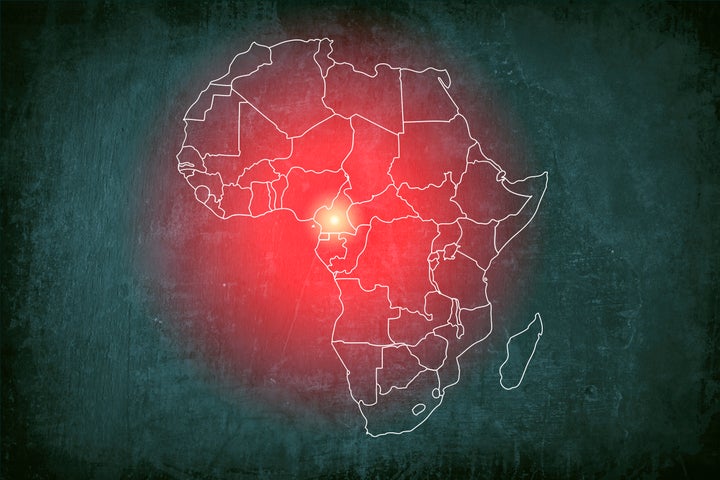
As the catastrophic Ebola outbreak killed 11,300 people and cost billions, the World Health Organization worked to lay the groundwork to make sure an outbreak never again reached that level of global health security threat.
As part of its overhaul in 2015, the international body set about identifying which diseases had the highest risk for causing a widespread public health emergency and little to no countermeasures to prevent their spread in order to catalyze funding for their prevention. Three years later, six of the eight categories of disease highlighted in the WHO’s “Blueprint priority diseases” list were in the midst of outbreaks ― at the same time.
They include the worst of the worst: Ebola. MERS. Zika. Nipah virus. Lassa fever. Rift Valley fever. So far, the outbreaks of these high-fatality diseases and pathogens this year have caused at least 190 deaths and cost millions. But all of these diseases have the potential to strike again and grow, causing an epidemic that could kill thousands, devastate the world’s economy and wreak untold havoc ― and all six were in active outbreak situations as of this June. That’s unprecedented, according to WHO’s Dr. Mike Ryan, the organization’s assistant director-general for emergency preparedness and response, in his 25 years on the frontlines of such outbreaks.
“There are these black swan events that could occur and we have a duty to prepare for them ― because our economies and our civilizations are so dependent now on the free movement of people and ... that capacity for trade,” he told HuffPost. “So anything that shuts down that is a major threat.”
The world will usually see four to five different high-fatality disease outbreaks a year ― but they’re typically not happening at the same time at this number, according to Ryan, who believes this is likely the first time it’s happened. He added this was, in a sense, a global “stress test” for outbreak response.
“If any of these things tips over ― especially more than one at the same time ― then I think we will be harder pressed as a global health community to respond,” Loyce Pace, the president and executive director of the Global Health Council, a membership organization that lobbies for global health priorities, told HuffPost.
And while this year’s outbreaks have been relatively contained, experts worry that the lack of investment in research and development as risk factors for outbreaks grow could lead to an outbreak they won’t be able to stop. That doesn’t just threaten lives, it could also threaten global security and stability ― after all, outbreaks have no respect for borders.
A Rise In Risk Factors
Part of the reason we know about more of these particularly worrying outbreaks is because of positive advancements: Health systems worldwide have improved, meaning more people have access to medical care than ever before. And more institutions, like the WHO and the Centers for Disease Control and Prevention, among others, are tracking outbreaks and keeping better records of the threats.
Even Congress is asking for more regular updates.
Rep. Ami Bera (D-Calif.), the vice ranking member of the foreign affairs committee, who has been vocal in previous funding fights for Ebola, submitted an amendment alongside Democratic Reps. Gerry Connolly (Va.), Rick Larsen (Wash.), and John Garamendi (Calif.) to the intelligence authorization bill. The amendment, which passed unanimously in the House Thursday, requires the Director of National Intelligence to brief Congress on the anticipated effects of emerging infectious disease and pandemics ― helping them get a better sense of the scale of the threat when making budget decisions.
“Preventing the spread of disease is a critical part of our national security and Congress needs to make this a priority,” Bera told HuffPost in a statement. “We’ve seen an improvement from where we were, but we have more work to do.”
“We don't know when the next Ebola outbreak will come but we do know it will come again, and again, and again.”
- Dr. Thomas Inglesby, director of the Johns Hopkins Center for Health Security
But ultimately, a rise in awareness does not fully account for the rise in such outbreak events, experts say. Several major factors are to blame for why the world is seeing more of these increasingly dangerous pathogens. The combination of massive widespread urbanization, explosive population growth, increased global travel, changing ecological factors, steady climate change and the exploitation of environments is driving an era of converging risk for outbreaks, experts say.
“What’s shifting and changing is not the bugs ― it’s the humans,” Ryan told HuffPost. “What’s changed is our relationship with those viruses, our relationship with the rainforests.”
People ― and more of them ― are living much closer together, driving up the risk for an outbreak in a massive urban center. Worldwide travel makes the spread of something like this easier than ever before. And the changing environment ― from different exposure to parts of the world, a general disregard for habitat and continuous climate change ― means humans are seeing things they haven’t faced before, in areas that have never seen them before.
Just take a look at sub-Saharan Africa, said Dr. Richard Hatchett, CEO of CEPI, the Coalition for Epidemic Preparedness Innovations. This is the largest Lassa epidemic that’s ever been observed, and then you throw an Ebola outbreak into the Democratic Republic of the Congo ― it’s not trivial, he said, stressing the need for heightened vigilance.
“These diseases can move around and they can crop up ― and if they find the right environment they have the potential to explode,” he said. “If you think about diseases as opportunistically finding places to emerge and spread themselves, it’s pretty frightening.”
And that kind of outbreak situation doesn’t just threaten the folks in the epicenter of the outbreak ― it has the potential to shake global stability.
“Not only are individual lives at stake, but as we have already seen, a crisis such as pandemic flu, SARS, or Ebola can devastate entire health systems and economies, stall future development, and even lead to political instability,” Rebecca Martin, director of the Center for Global Health at the CDC, told HuffPost. She pointed to the 800 killed by SARS in 2003 and its $40 billion price tag. The cost of the next pandemic could be over $60 billion, she said.
“Gaps in public health emergency response capabilities remain a serious vulnerability for the entire world,” she added. “While we don’t know when or where the next pandemic will occur, we know one is coming.”
A Need For More R&D
Massive tactical global resources and an experimental vaccine were mobilized to quell the Ebola outbreak, which reached an urban center, in the DRC. The outbreak is expected to be declared over soon, ending with a total of 29 deaths. A record 3,330 people were vaccinated, WHO told HuffPost, and global health organizations completed over 20,000 follow-up visits in order to keep the spread of disease ― and thus the fatalities ― low.
These large-scale resources are necessary to fight such outbreaks and keep them from growing into ones of regional, national and international significance ― and aren’t isolated to Ebola.
For instance, over 2,000 people were quarantined in their homes in southern Indian state of Kerala during the Nipah virus outbreak. In Nigeria, the levels of Lassa fever are ”unprecedented,” Kenya is fighting the frightening Rift Valley Fever by slaughtering camels and goats that are suspected hosts, and Saudi Arabia has found four distinct clusters of MERS ― two of which are in health centers.
And then there’s the Zika outbreak, Hatchett said.
Its widespread infection rates across the world in places the virus had never been seen was essentially a stand-in for “Disease X,” the unknown emerging pathogen that’s the eighth disease category on the list, Hatchett said. Disease X often concerns outbreak experts the most, as the logistics of preparing and fighting an unknown pathogen are horrifying. So when Zika exploded in 2016, even though it had been seen before, it had never been this widespread ― making it similar to the dreaded Disease X quandary.
So now, even two and a half years later, Hatchett says, there is still no vaccine ready to be deployed for Zika.
“If you had a virus that spread like influenza, which could spread around globe in 60 days, two-and-a-half years is way, way too long before you have some sort of measure” to stop it, Hatchett said.
“While we don’t know when or where the next pandemic will occur, we know one is coming.”
- Rebecca Martin, director of the Center for Global Health at the CDC
There have been some efforts to build vaccines for these diseases ― before the world desperately needs them. For example, the Coalition for Epidemic Preparedness Innovations or CEPI, founded in 2017 by a consortium of institutions including the Bill and Melinda Gates Foundation, the Wellcome Trust, the World Economic Forum and the governments of Norway and Japan, is seeking to create vaccines for Lassa, Nipah and MERS based off the WHO’s priority list. Other efforts include the experimental Ebola vaccine developed by Merck, as well as some of the experimental treatments for Ebola.
The creation of a global organization like CEPI is essential because, as Hatchett puts it, there’s no commercial demand for these drugs ― until people really want them. In other words, funding the expensive development of drugs for, typically, poor people in poor countries is not profitable.
The failure to develop drugs that fight these rare, but potentially disastrous, outbreaks means when the world really needs them, they will be years behind. It would cost a couple billion to bring vaccines and treatments to market for all 10 of the known diseases on the list, according to CEPI calculations. It is starting with $630 million raised so far on targeting MERS, Nipah and Lassa.
Yet, public health experts often cite the panic-driven cycle of epidemic and public health funding, which relies on these outbreaks being top of mind. And the R&D to fight them is no different.
“The problem with public health in particular and with R&D is what we’re ultimately trying to do is prevent bad things from happening,” Dr. Thomas Inglesby, director of the Johns Hopkins Center for Health Security, told HuffPost. “When you succeed, it’s relatively invisible ― so the public doesn’t get to see why investment is so important.”
While the need for R&D is greater now than ever, Inglesby says he’s has been heartened by how much more top-of-mind pandemic risk is these days. He pointed to better global evaluations by the WHO and an increase in outbreak threat indexes as steps in the right direction.
“I think these diseases are part of the threat landscape in the world,” Inglesby said. “They do damage and they cause outbreaks and appear again. We don’t know when the next Ebola outbreak will come but we do know it will come again, and again, and again.”
And when it does ― disease sees no borders.
“We know that an outbreak that begins in a remote village can reach major cities on all continents, including here in the U.S., in 36 hours,” the CDC’s Martin said. “In today’s interconnected world, a health threat anywhere is a threat everywhere.”
